Who knows if Octavian Augustus, when before his death he gave orders to have his Res gestae, the deeds he had accomplished (a kind of propaganda autobiography), written and engraved on his Mausoleum and then in squares and monuments around the empire (the best preserved version comes to us from Ankara), would ever have thought that two thousand years later that document would be used as the main historical source for an exhibition in his Rome, at the Quirinal, the home of the Italians. To even imagine that a text of exquisite political intent, useful for keeping alive the memory that Augustus had wanted to build of himself during his lifetime, could be the core of the most ambitious archaeological exhibition of 2021 in the capital of Italy might seem strange. Yet that is exactly what happens with the exhibition Tota Italia. At the Origins of a Nationset upat the Scuderie del Quirinale, organized by Ales and the Ministry of Culture and curated by Massimo Osanna (General Directorate of Museums) and Stéphane Verger (National Roman Museum).
The entire exhibition is based on two theses, of the goodness of which the curators appear convinced: first, pre-Roman Italy from the fourth century B.C. onward tends, albeit in a non-linear way, toward Romanization, and its cultures can be described in a Roman-centric way. This process of Romanization, more or less violently, comes to fruition with the unification of the peninsula with the empire of Augustus in 17 BCE. Second, that moment of peninsular unification is the direct antecedent of the national unification of 1861, which is repeatedly referred to as “reunification” in the panels and in the exhibition catalog.
These are two theses that are not recent, that had great fortune in the 19th century (there is no other moment in history, other than the Roman one, when the peninsula had been united under the same state), and that were even more revitalized under Fascism, which invested heavily in the myth of Augustus, with the 1937 exhibitionandtheopening to the public of the Mausoleum, which, not coincidentally, reopens this year, to correspond with this exhibition. But both are dated and biased theses, which deserve, at the very least, a critical examination. To speak of an Italian “nation” in the first century B.C. is to project a contemporary category to a past in which nation-states did not exist, even in the imagination; to consider Augustus’ Italy as the ideal mother of contemporary Italy has several limitations, starting with the fact that the islands were not part of it. However, these aspects, and many others, are not taken into account in the exhibition.
Rather, the exhibition opens with a quotation (the first of many) from the Res gestae, which reads “Iuravit in mea verba tota Italia sponte sua” (all of Italy swore in my name spontaneously), referring to 32 B.C., when in war against Antony, Octavian obtained the military support of the entire Roman West. In the same room, an infographic shows Rome’s expansion into the peninsula between the fourth century B.C. and 17 B.C. (it should be noted, however, that the other actors are just uncolored names, so it is impossible for the uninformed viewer to understand who the cultural subjects were with whom the Latin city was dealing, and on what terms). The infographic ends with all of contemporary Italy colored the same color, even the provinces of Sicily, Sardinia, and Corsica, which also were not part of Augustan “Italy,” but were, indeed, provinces. An infographic therefore misleading. A choice was made not to expose the passage from the Res gestae following the one quoted above, which explains how they also swore in his name “the provinces of Gaul, Spain, Africa, Sicily and Sardinia”: certainly the viewer’s understanding does not benefit, finding himself completely immersed in the theses advocated by the editors.
There are other elements that hint at choices, more or less explicit, aimed at removing elements that are not very functional to the simplified narrative they wanted to offer visitors. The most obvious is the removal of the Punic element: among the cultures listed as “unified” on Italic soil by Augustus, Greek and Celtic cultures are included, but although Punic (a Semitic language) was written and spoken in Sicily and Sardinia at least until the first century AD, not only is there no artifact from these regions at the exhibition (the same is true for Piedmont and Lombardy, and may be due to logistical reasons) but, far more curiously, among the alphabets of pre-Augustan Italy, Phoenician is not even mentioned. Again, a removal of complexity, and this is only the most obvious case.
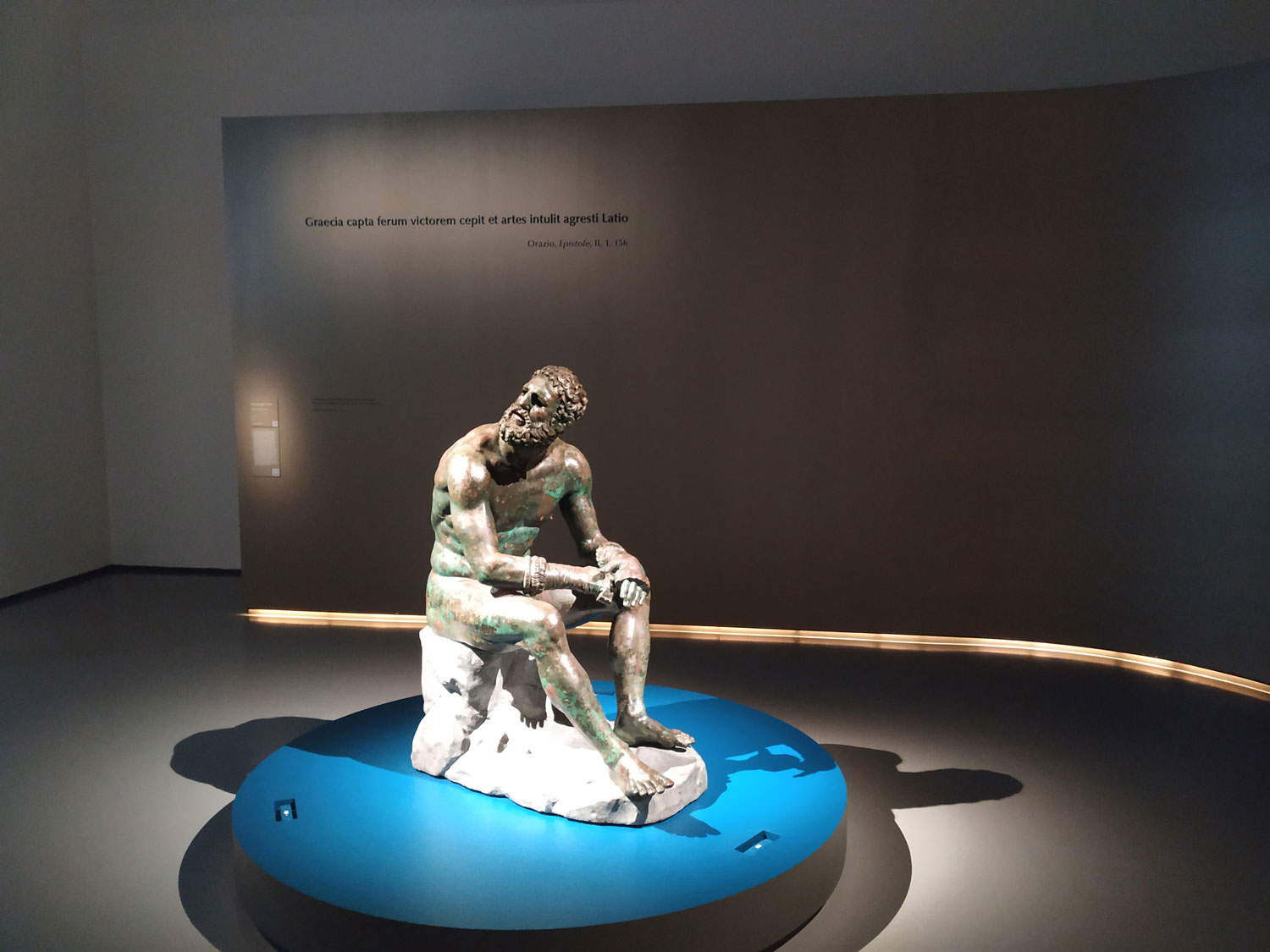 |
| Tota Italiaexhibition |
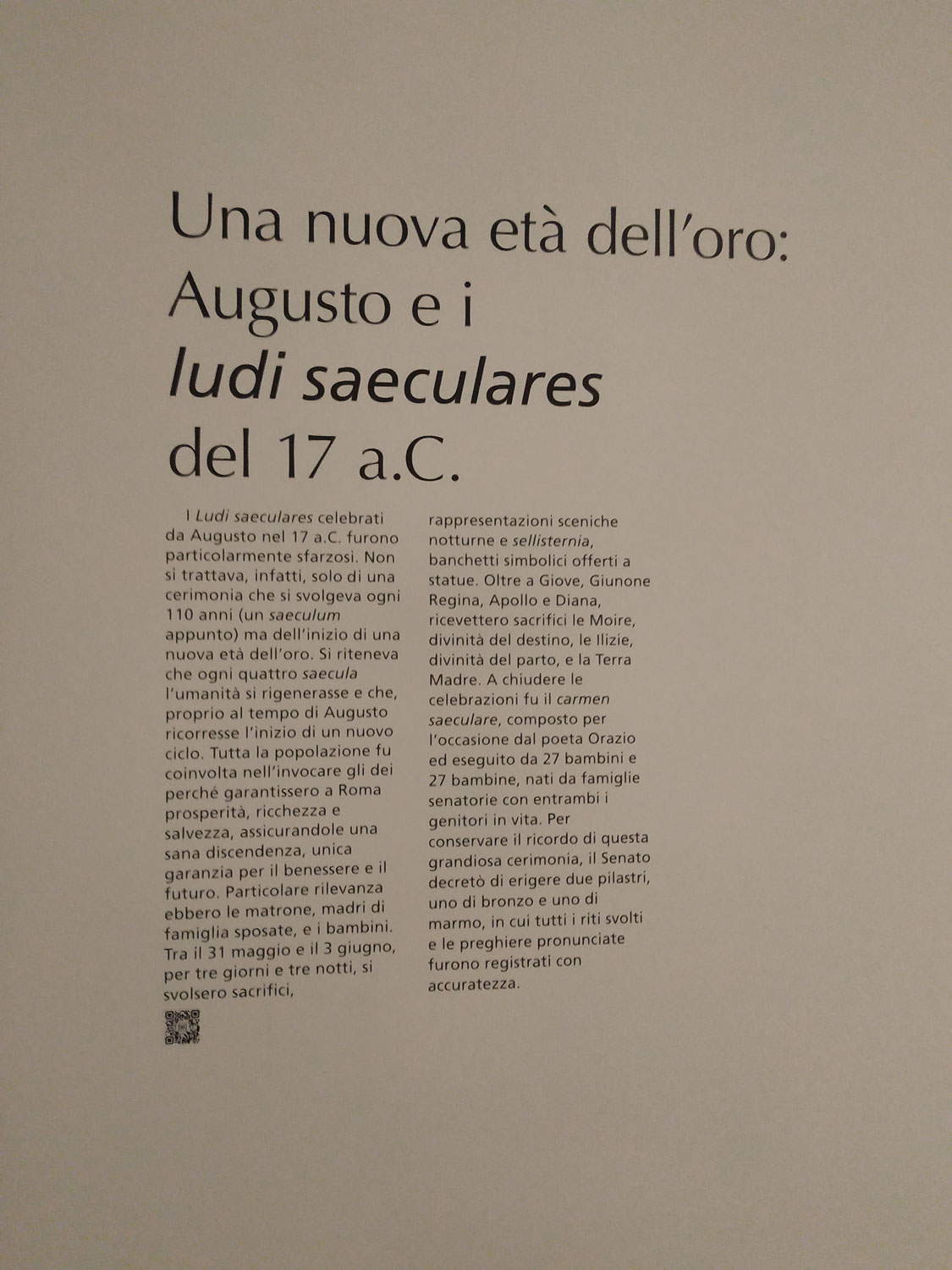 |
| Tota Italiaexhibition |
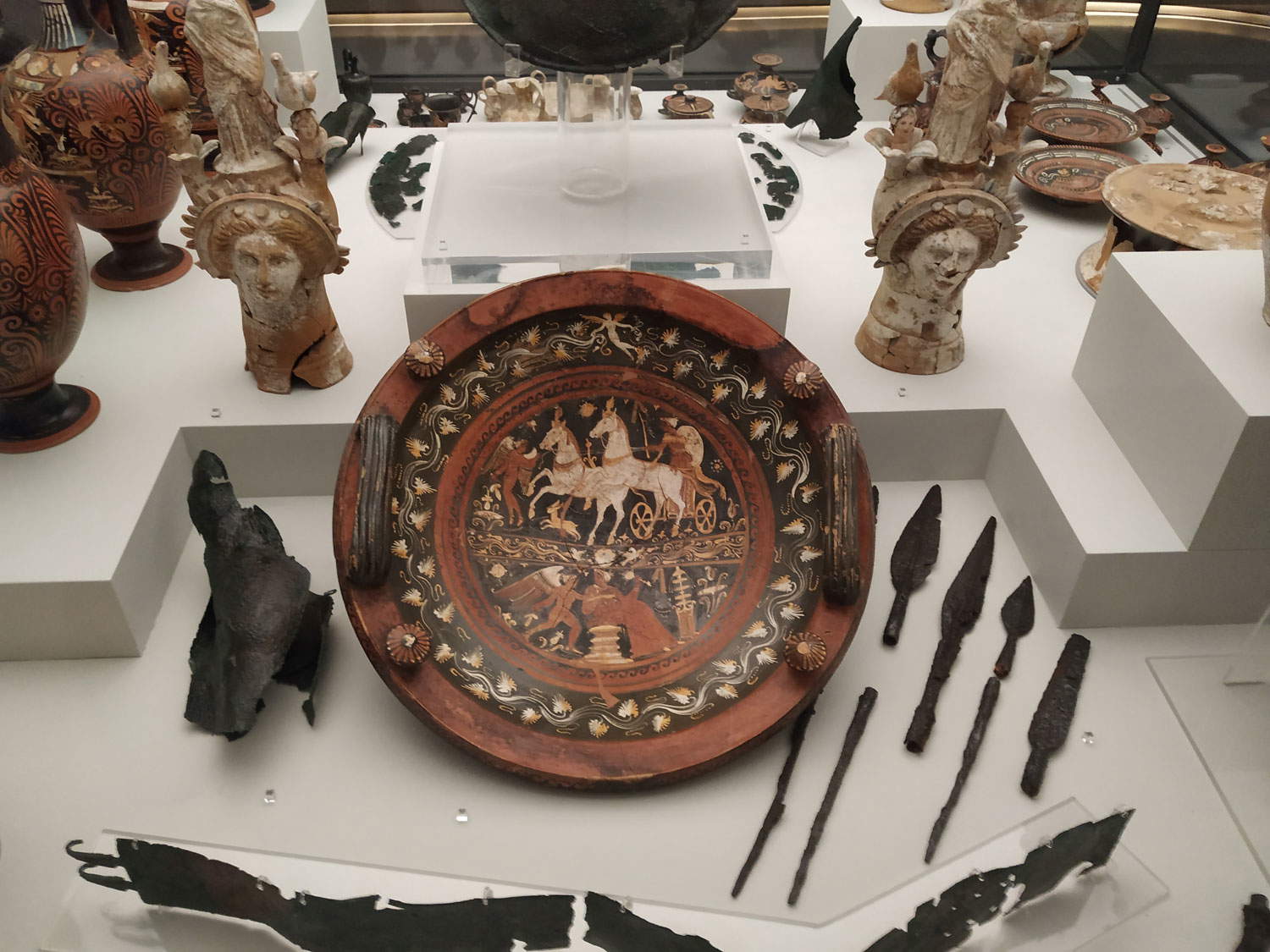 |
| Tota Italiaexhibition |
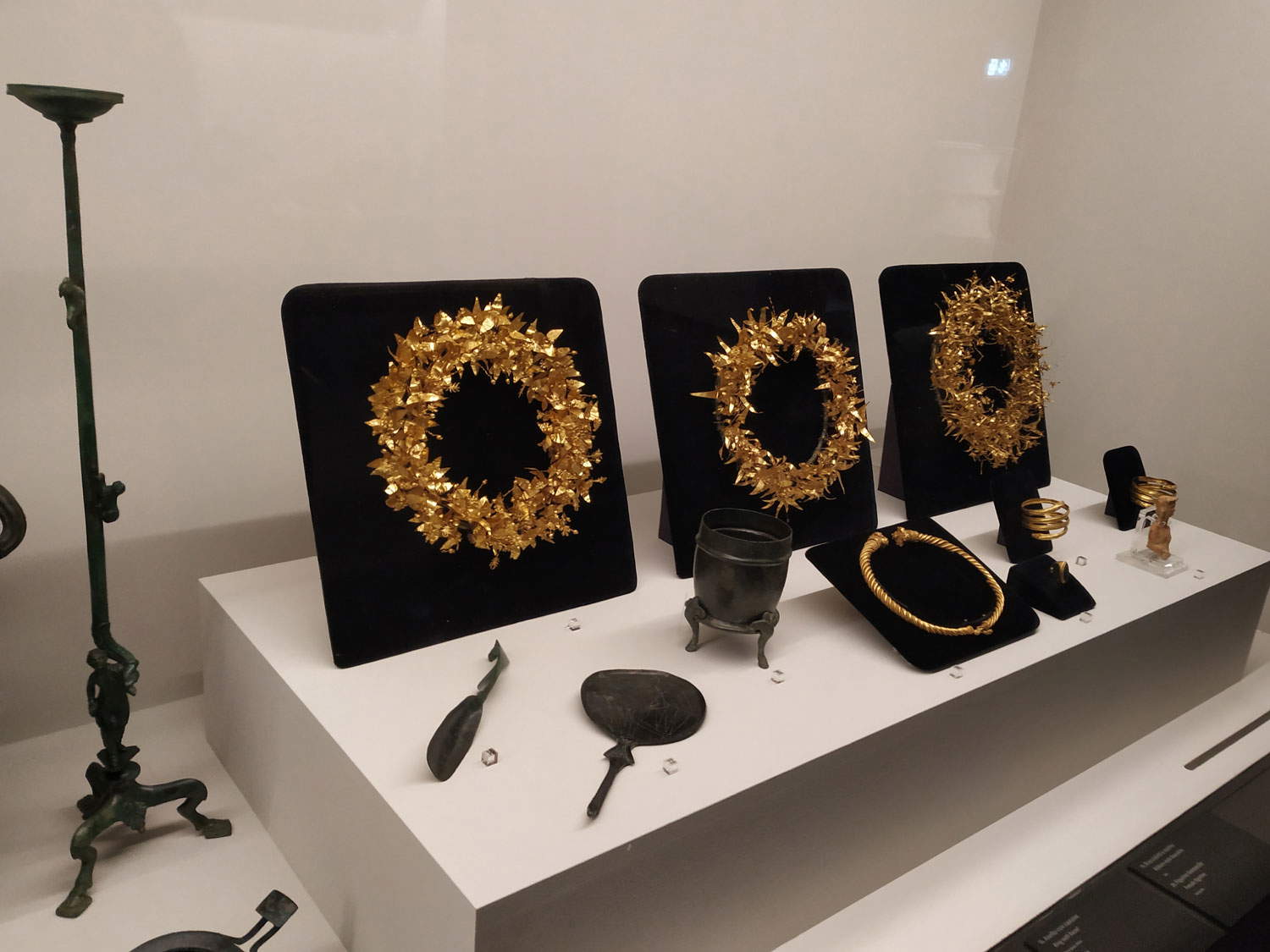 |
| Tota Italiaexhibition |
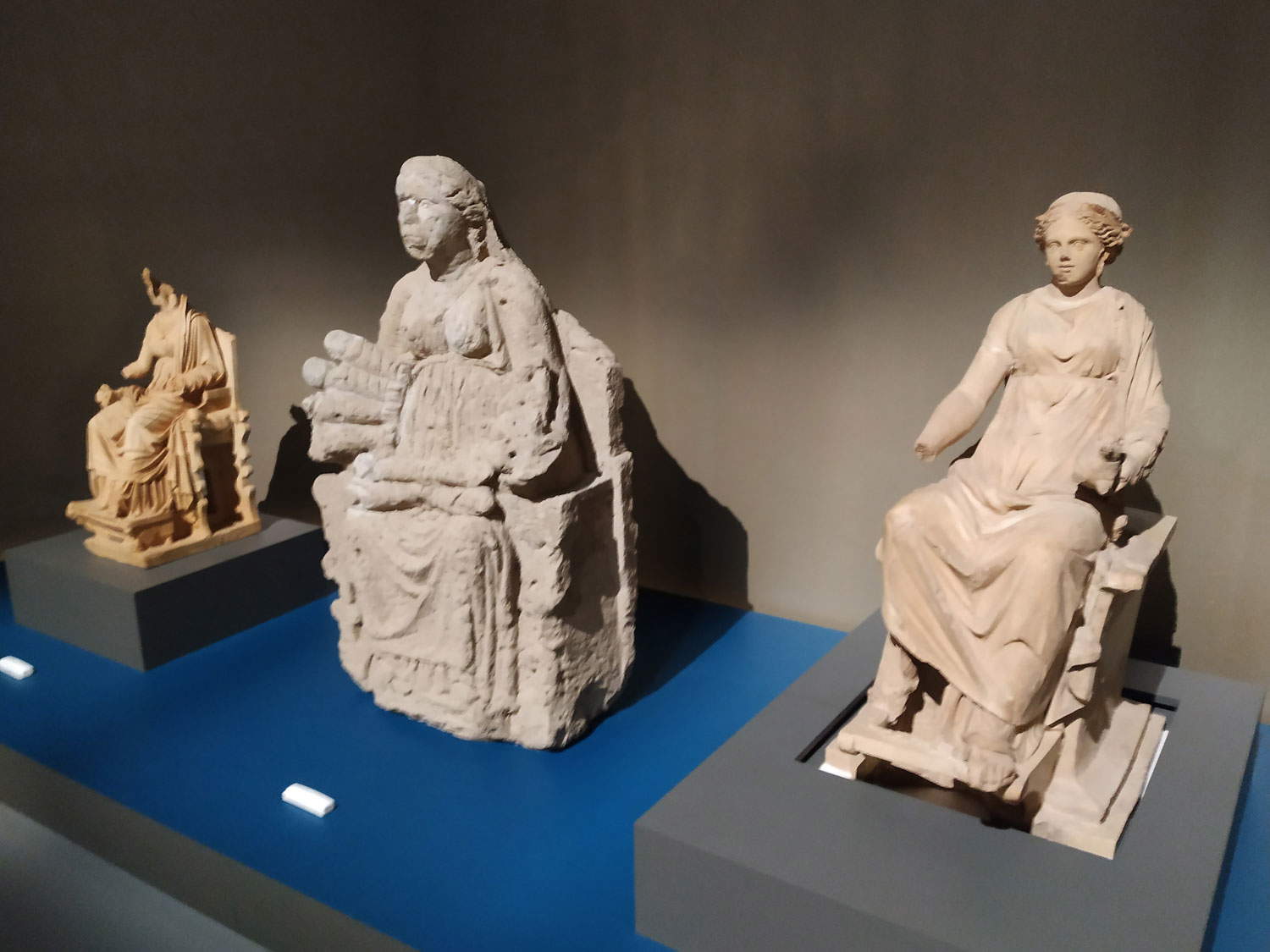 |
| TotaItalia exhibition |
The exhibition contains a variety of extraordinary pieces that are normally scattered around the peninsula, from Melfi to Aquileia, from Luni to Taranto. Such variety and richness is perhaps the only good point of this exhibition: for those who love ancient art or for a researcher it becomes an important opportunity to view in the same place very different finds in terms of chronology and place of origin. But unfortunately, only an experienced eye will be able to draw information from comparing the pieces: the exhibition panels do not give the visitor the tools to grasp the complexity of the cultural processes that produced those material expressions on display. The exhibition is divided by themes (funerary rites, languages, cults, contacts with the Mediterranean, wars, organization of the territory, religions and luxury - together -, faces), and in each room are collected artifacts that are also very different in chronology and cultural origin. On display are, among others, marble griffins from Ascoli Satriano (room 1); artifacts from the very rich trousseau of the “tomb of the two warriors” from Melfi (room 2); gold crowns and bracelets from a tomb in the Montefortino d’Arcevia necropolis (Ancona, room 2); the Capitoline triad from Guidonia Montecelio (room 3); the Etruscan liver model for divinatory practices, from Piacenza (room 3); the statue of Mater with twelve children from Capua (room 4); the statue of Marsyas exhibited in Paestum (room 7); the frieze with a foundation scene from Aquileia (room 7); the Apollo lampadoforo from Pompeii (room 8); votive stipi, decorations, jewelry, inscriptions in Etruscan, Oscan, and Venetian languages--just to name the finds arriving from outside Rome. Other unique and exceptional pieces come from Roman state museums (Villa Giulia, the Barberini Corsini Galleries, the Baths of Diocletian, Ostia Antica...).
Walking through the rooms, however, one does not have the impression of an organic arrangement, in which each exhibit dialogues with the one next to it and with the environment, but more of an exhibition in which a little bit of everything possible has been put together, starting with those exhibits of extraordinary notoriety that seem almost to act as “promoters” of the exhibition even though they are not essential to the narrative. And that the symbol of the exhibition is the boxer at rest, from the collection of the National Roman Museum, the exhibition’s co-organizer, only confirms the feeling that a choice was made to enrich the catalog even at the cost of moving only a few kilometers of exhibits of great notoriety.
As is often the case, one has to ask how appropriate it was to deprive some museums of their main and most attractive exhibit precisely for this exhibition, which certainly could have done without it (very little has to do with the Roman unification of Italy many of the exhibits, which seem more to enrich the rooms than anything else), and precisely in the summer when domestic tourism, away from the big attractions, should have been encouraged. It applies to museums far from Rome but also to those in the city, especially the National Roman Museum, which lends one of its best-known pieces, the “boxer at rest,” and many other notable artifacts (there are more than 20 out of the 170 on display at the exhibition) to the exhibition, depriving itself of them until the exhibition closes.
The visitor informed about Roman affairs may perhaps notice a parallel between the operations conducted by the ancient armies, which brought their favorite pieces to Rome, and the choices of the General Directorate of Museums, which decided to bring to the capital artifacts that would have deserved to remain where they were found and valued there.
Looting and violence, however, which were also essential elements in the Romanization of the Peninsula, are barely mentioned in the exhibition: they are discussed extensively only in a room on the second floor, dedicated to “wars.” Pieces of Tarentine craftsmanship, which came to a brutal halt after the Apulian city was subjugated to Romeatthe end of a three-year siege in 272 B.C., are displayed alongside artifacts from the next century from territories where Romanization took place without annihilation. The insurrection first of Fregellae in 125 B.C., which demanded Roman citizenship (destroyed and sacked), then of the entire block of Italic allies, which in 91-88 B.C, after three years of fierce warfare, though defeated obtained Roman citizenship (a necessary move for Rome to win the insurrection), are in both cases barely mentioned: the fact that it is the allies of the Italic League, in an anti-Roman key, who are minting coinage with the name “ITALY,” is mentioned without giving the audience any tools for understanding the event. Yet if “all Italics today are Romans,” as Strabo wrote in the Augustan age and as cited by the exhibition, much is due to that concession, obtained because of and at the end of a rebellion.
Instead, the curators thought that military defeats could be mocked, placing the boxer at rest (a Greek-made statue, most likely brought to Rome after a military victory) under the Horatian quotation " Greece conquered, conquered the savage victor, and the arts brought to rural Latium." And they leave no room for doubt, writing in a panel that the Italic peoples, far from having accepted the new Roman power for the most disparate reasons, from advantage, fear, ignorance, desire for revenge, and military defeat, unanimously derived “advantages and benefits from active participation in the new Mediterranean empire.” Without distinguishing between dominant and dominated classes, between peoples who had chosen integration and suffered it, and between those who, quite simply, came out defeated and therefore could not participate in anything. Once again, a simplification in the name of an addressed narrative.
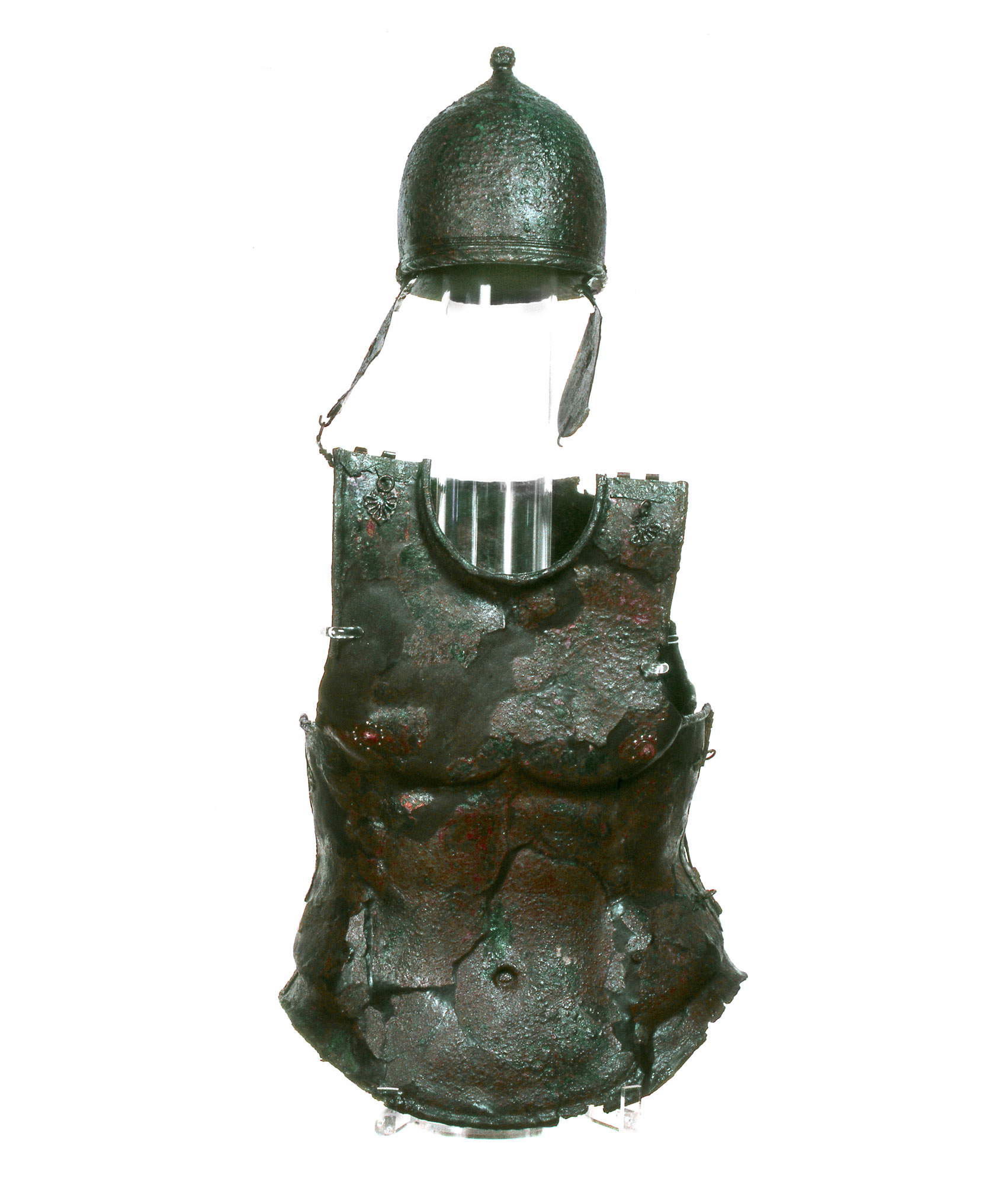 |
| Tomb of the Two Warriors trousseau, anatomical breastplate and button helmet from dipo Montefortino (3rd century BC; bronze; Melfi, Museo Archeologico Nazionale del Melfese) |
 |
| Canteen support (trapezophoros) with two griffins attacking a fawn (second half of 4th century BC; insular Greek marble; Ascoli Satriano, Museo Civico) |
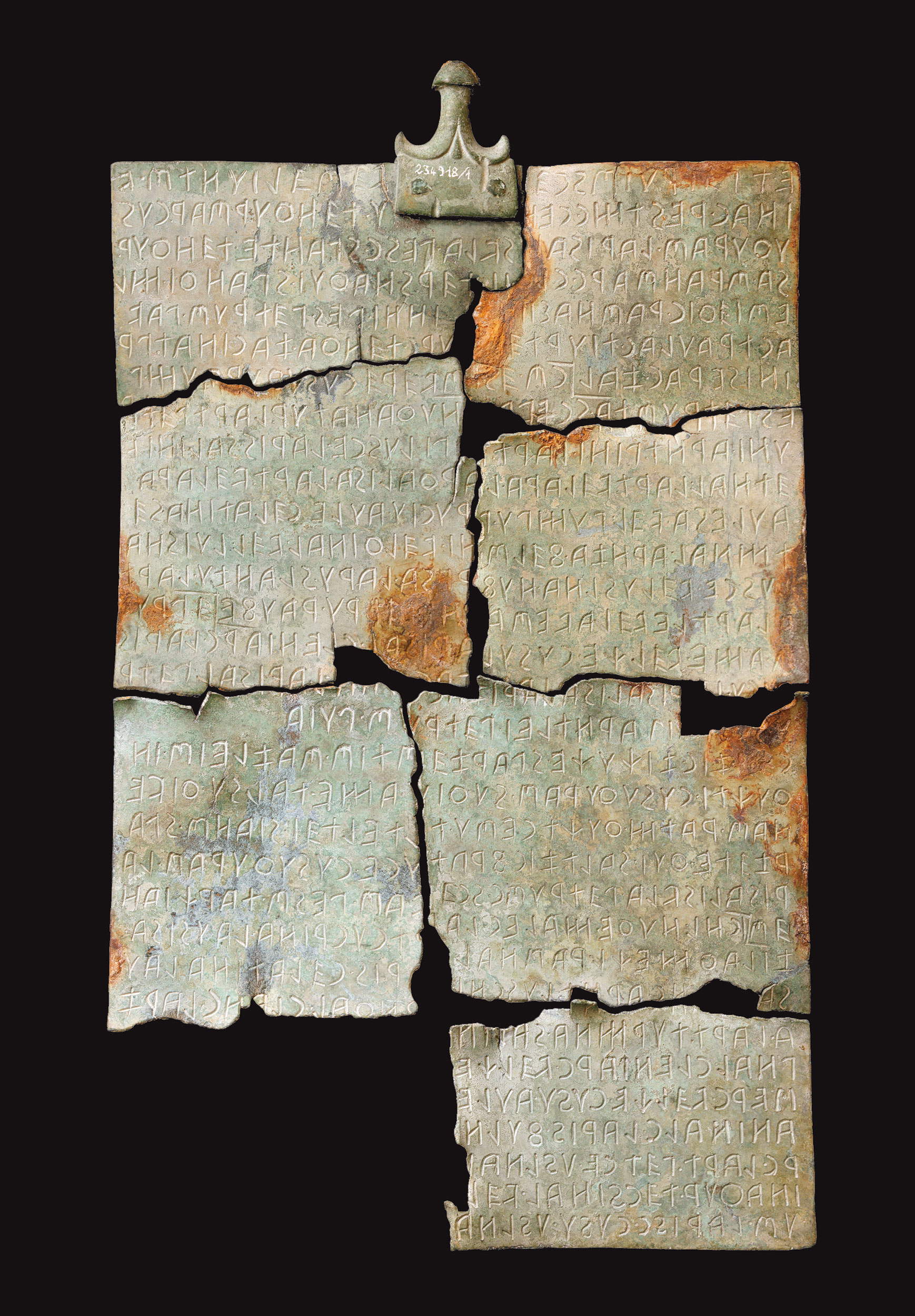 |
| Tabula Cortonensis (2nd century BC; bronze; Cortona, Museum of the Etruscan Academy and the City of Cortona) |
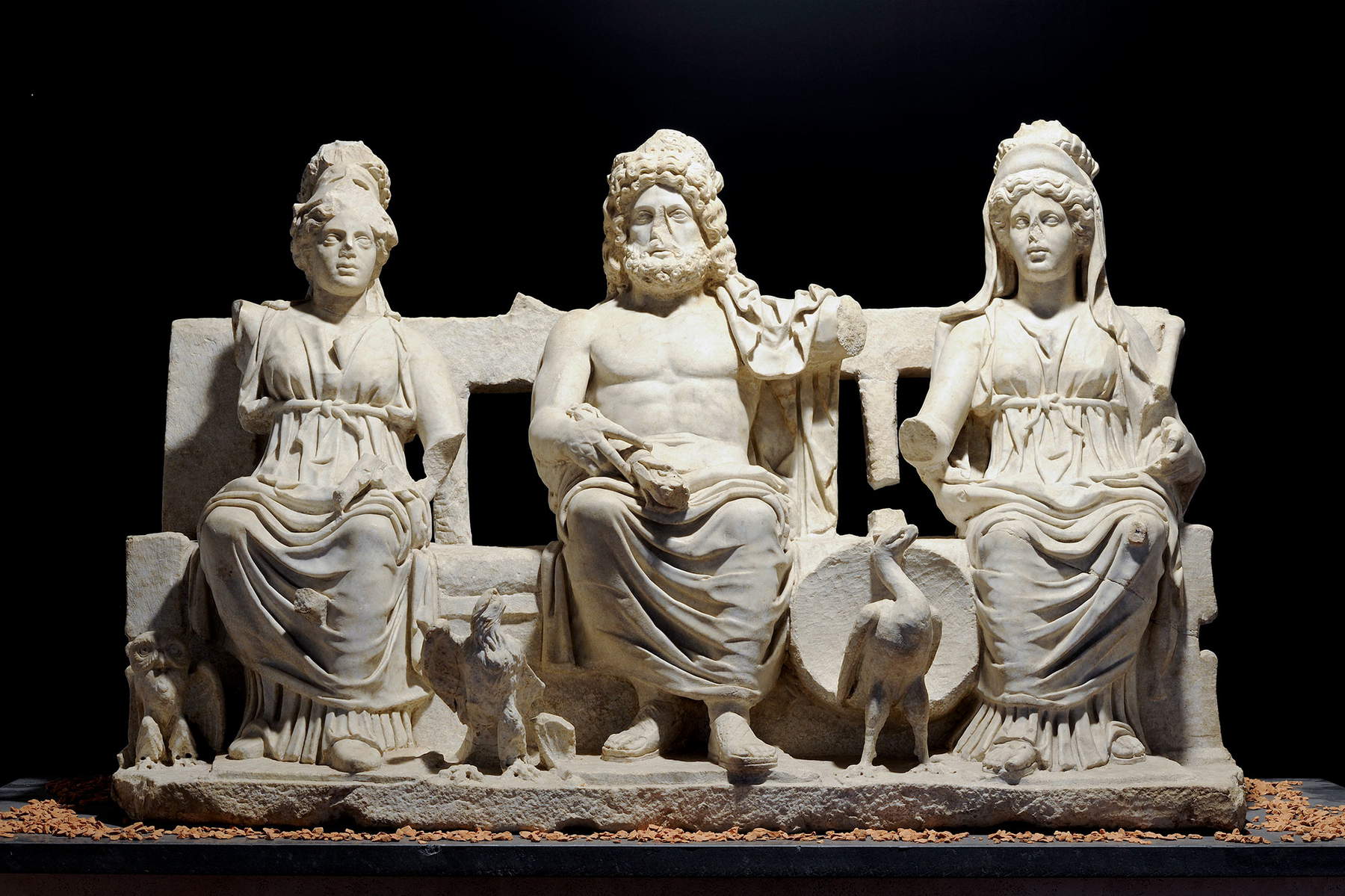 |
| Capitoline Triad (2nd century AD; marble; Guidonia Montecelio, Rodolfo Lanciani Civic Archaeological Museum). Photo by Giovanni Coccia |
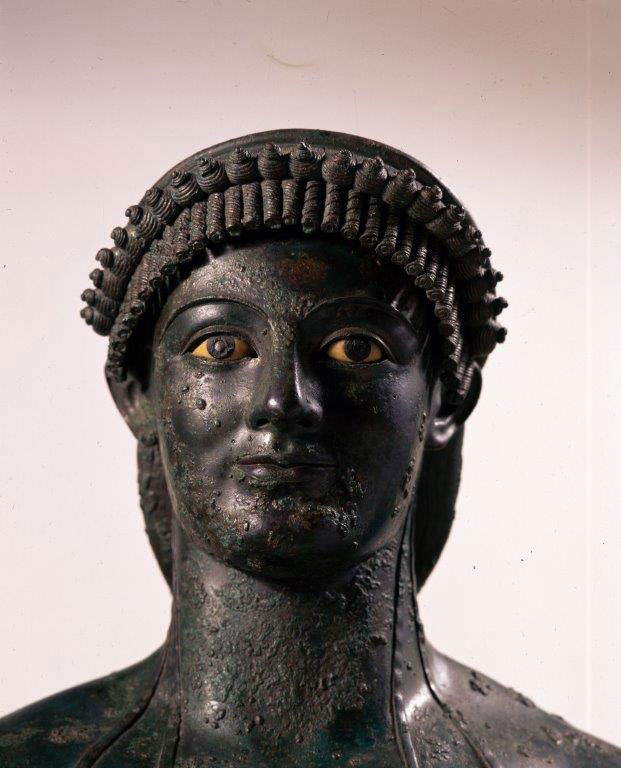 |
| Statue of Apollo lampadoforo (1st century B.C.; bronze; Pompeii, Archaeological Park). © Archives of Art - Photo Luciano Marco Pedicini |
 |
| Statue of Marsyas with slave strains (3rd century BC; bronze; Paestum, Paestum and Velia Archaeological Park) |
The exhibition closes with what is perhaps the most political of rooms, speaking of the “new golden age” inaugurated by the Augustan regime. With expressions such as “confidence in Augustus’ leadership and the belief that the new state he established would last forever spread everywhere: internal peace, prosperity, territorial solidity were there for all to see.” That Augustus experienced internal opposition (which he nevertheless succeeded in winning, ensuring continuity to the regime he established) is not even mentioned. And it is a fitting closure for an exhibition based on one myth, the Augustan myth, and that of a united, Roman Italy: an exhibition that opens and closes, not coincidentally, with two representations of the myth of the birth of Rome, both from the second century A.D., while all the other exhibits reach back to the first century A.D. at most: as if to say that, ex post, everything shown was written in the stars, in myth.
The exhibition, in short, represents at best a missed opportunity, at worst yet another megaphone for an overly biased version of History. There are few reasons to justify the visit, at a cost of 15 euros. To be a fanatic of Augustus (but perhaps not even then, given the low depth offered), or, as mentioned above, to have a professional interest or necessity that drives one to want to see in the same place this exhibition of artifacts, even in its disorganization. And all this is a huge pity. Because it is true that that moment in the history of the peninsula was fundamental, on a practical and ideological level, to arrive at what we are today: to analyze in an exhibition the myth that Augustus wanted to construct, his propaganda, his narrative, and how the same was used by the nascent unified state and by fascism later would have been not only interesting, but necessary, after 170 years of national unity. But there is no space for these themes: the exhibition conforms to dated narratives, copying and pasting from the Res gestae, and skipping over the entire decades-long debate about the birth of nations, the use of Roman history and Roman imperialism for propaganda purposes, the need to give voice to those who suffered that occupation, or the choices of the many peoples who came into contact with Rome, its culture, and its military might.
Warning: the translation into English of the original Italian article was created using automatic tools. We undertake to review all articles, but we do not guarantee the total absence of inaccuracies in the translation due to the program. You can find the original by clicking on the ITA button. If you find any mistake,please contact us.